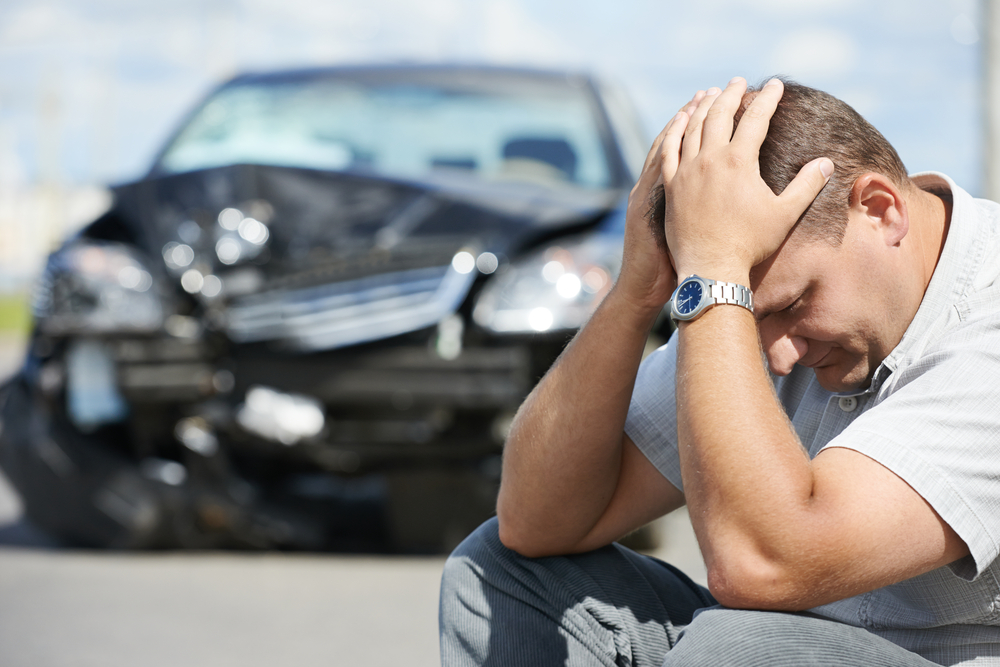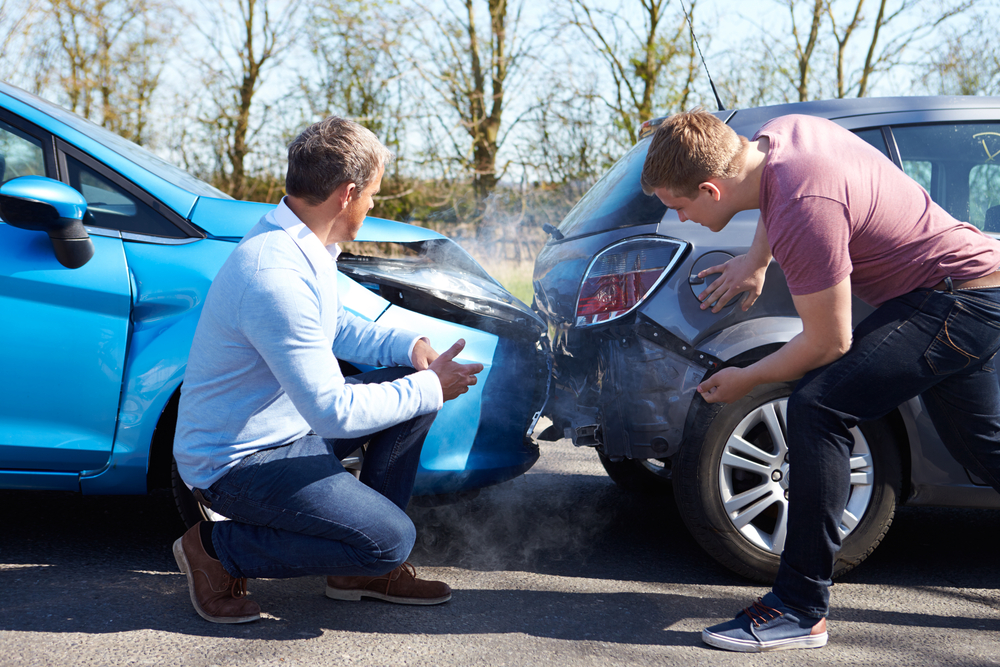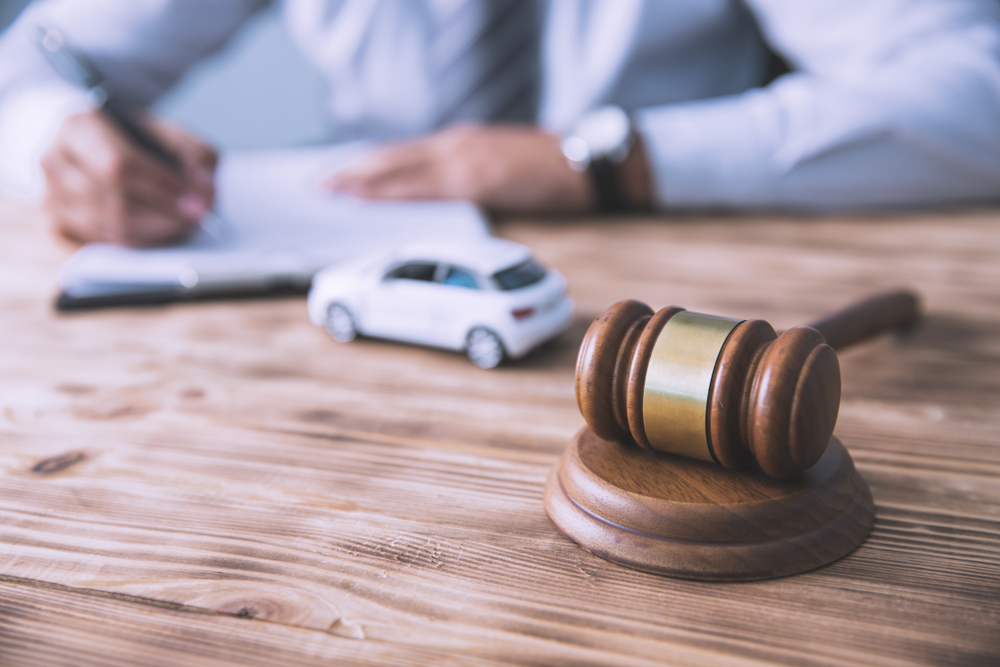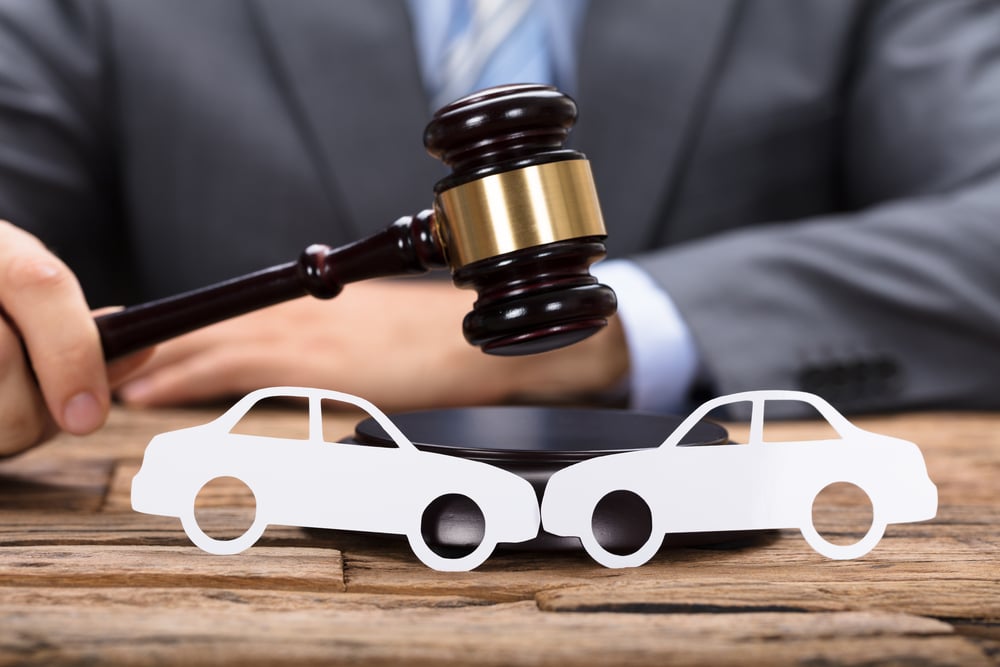In most situations, there are two ways to approach responsibility for car accident injuries. The first is from a literal perspective. Who caused the accident — or, in other words, who is at fault for the incident? The second way to approach responsibility is from a financial perspective. Who is liable for injuries? Or, in other words, who must pay for damages?
In many states, the person who causes the accident is also responsible for paying for the associated damages. Those damages may include medical expenses, lost wages, pain and suffering, and more. However, in no-fault states such as New York, the at-fault party is not always held financially liable.
If this concept confuses you, you are not alone. Fortunately, you do not have to approach your car accident injury claim alone either. A qualified New York City car accident lawyer can help you understand the state’s no-fault system and how to pursue damages within it. He or she can also advise you of when you have an auto accident lawsuit, in which case, you can pursue damages outside of the no-fault system and against the at-fault party.
New York’s No-Fault System
New York is just one of 12 states that maintains a no-fault insurance system for car accidents. Per this system, every driver must maintain a certain amount of coverage on which they can rely. When a driver does get into an accident, he or she can turn to his or her insurance company for reimbursement for damages, regardless of who caused the motor vehicle accident.

This type of system is in place for two main reasons:
- It makes it much easier for drivers who maintain the minimum levels of coverage to receive compensation for their injuries and damages.
- It keeps frivolous car accident lawsuits out of the court system, thereby saving the courts and drivers money.
To register a vehicle in the state of New York, drivers must maintain a minimum amount of coverage.
Minimum Coverage Requirements
New York requires drivers to carry three basic types of coverage. Those are as follows:
- No-Fault Personal Injury Protection: The purpose of Personal Injury Protection (PIP) coverage is to pay for medical bills, lost wages and other damages that may result from the car crash. Under this type of coverage, insureds can receive up to 80% of their lost earnings from work for a maximum of $2,000 per month for up to three years. They can also receive up to $25 per day for one day from the date of the accident for reimbursement of incidentals related to the accident. “Incidentals” may include household help, the cost of transportation, etc. Insurers must also cover the entirety of medical expenses related to the accident, up to $50,000 per person. PIP also pays out a $2,000 death benefit for insureds killed in motor vehicle accidents.
- Uninsured Motorist: In no-fault states such as New York, PIP safeguards drivers against uninsured motorists. However, should you or a loved one need coverage beyond what PIP provides, uninsured motorist coverage kicks in.
- Liability: Liability coverage pays for any property damage your vehicle — or any vehicle you drive with the owner’s permission — may cause. New York maintains minimum liability limits of 25/50/10, meaning $25,000 for bodily harm that does not result in death; $50,000 for injury resulting in death; and $50,000 for bodily harm to two or more persons that does not result in death, or up to $100,000 for injuries that result in the death of two or more persons.
If you carry the minimum amounts of coverage, your insurer should pay for any damages you sustain in the accident. However, know that even under the no-fault system — which is in place for your benefit and ease — you may struggle to recover fair compensation from your insurance company. If this is the case, retain NYC car accident attorneys who can value your damages and negotiate for the best possible settlement.
When Your Damages Exceed the Minimums
What happens, though, if your injuries are so severe that your financial losses far exceed what your insurance will cover. Are you out of luck?
Not necessarily. In fact, you have a few options.

The first is to file a claim against your Additional No-Fault, or Additional PIP, policy. This type of coverage is an add-on, so you may or may not have it. If you did have the foresight to purchase this optional coverage, you can claim up to the coverage amount for the same damages that standard no-fault insurance covers. That includes medical expenses, lost wages, incidentals, etc.
If you do not have Additional PIP, you may be able to file a claim with your health insurance provider to cover the cost of medical expenses. However, note that some insurers will not cover the costs of medical care that stem from motor vehicle accidents.
As for lost wages, look into eligibility for Federal Social Security Disability Benefits. If you qualify, you can use this income to cover the costs of living while you recover.
The final option you have, and one that may either be your best or worst, depending on the defendant’s financial situation, is to file an auto accident lawsuit against the at-fault driver. If you go this route, it is imperative that you retain the help of an attorney for car accident injuries in New York. Before you explore this option more in-depth, consider another situation in which you may have to go the lawsuit route.
When Your Claim Meets the “Serious Injury” Threshold
New York rarely allows car accident victims to seek compensation outside of the no-fault system. In fact, the only exception to using no-fault coverage to pay for damages is when accident victims sustain “serious injuries.” To define what constitutes a serious injury, New York developed the Serious Injury Threshold.

According to The New York State Senate, a serious injury is one that results in death or that includes any of the following:
- Significant disfigurement
- A fracture
- Dismemberment
- Loss of a fetus
- Substantial limitation of a bodily system or function
- The permanent loss of function of a body member, function, organ or system
- The permanent and substantial limitation of the use of a bodily organ or member
The state also considers a “serious injury” to be one that is not necessarily permanent in nature but that impairs the victim’s ability to engage in all of the material actions that constitute his or her typical and customary daily activities. This hindrance must occur for not less than 90 days of the 180 days immediately following the incident.
If your injury meets the serious injury threshold, you have legal grounds on which to file a personal injury lawsuit for compensation. Car accident lawyers can help you file your lawsuit and do what is necessary to build a strong case.
Statute of Limitations for Filing an Auto Accident Lawsuit in New York
If you have grounds to file an auto accident lawsuit in New York, note that it is important to retain legal help sooner rather than later. There are several deadlines and requirements you must meet to have a case, and if you miss any, you may hurt your case or even forfeit your rights to recovery. One of the most important deadlines you must meet is called the statute of limitations.

The statute of limitations is the window of time in which accident victims must file a claim for compensation for an injury. The amount of time individuals have varies from state to state. However, in every state, if a person fails to file a claim within that window, he or she forfeits his or her right to recovery.
In New York, the statute of limitations for personal injury claims is three years. The time starts counting down on the date of the accident or on the date the plaintiff discovers his or her injury, given that the date of discovery is reasonable. For car accident victims, the statute of limitations starts running on the date of the accident.
How To Prove Negligence in a Car Accident Case
If you sustained injuries in a New York car accident, meet the grounds for filing a car accident lawsuit and file your claim within the statute of limitations, your next responsibility involves establishing negligence. To recover compensation outside of New York’s no-fault system, you must prove that the other party acted negligently, and that said negligence caused or was a major contributing factor in your accident.

To establish negligence in a personal injury case, you must establish four main elements. Those elements are as follows:
- Duty: Every driver owes other drivers and pedestrians on the road a basic duty of care to not operate their vehicles in ways that would cause harm to others. Per the law, the duty of care must be “reasonable,” meaning that drivers must operate their vehicles according to state and federal laws and conscientiously strive to avoid causing injury to others. Examples of actions that demonstrate reasonable care include following the speed limit, abiding by road signals and stop signs, and stopping to let pedestrians cross. By virtue of operating a vehicle on New York roadways, a driver assumes this responsibility.
- Breach of Duty: The next element you must prove in your car accident claim is breach of duty. Breach of duty is essentially the negligence portion. Just as following the law demonstrates one’s commitment to upholding his or her duty, breaking the law shows breach of duty. If the driver that caused your accident ran a stop sign, was speeding, failed to use his or her turn signal, or was texting while driving, you effectively establish a breach of duty.
In some cases, a driver need not break the law to breach his or her duty to other drivers and pedestrians. Rather, the courts may ask, did the driver act as any reasonable person would have in the same situation?
For example, the driver who caused your crash may have been driving the speed limit when the incident occurred. However, it was downpouring at the time and every other driver on the road was driving 20 mph under due to poor visibility and wet roads. Because the at-fault driver’s actions were against what a reasonably cautious person would have done in the same situation, the courts may determine he or she breached his or her duty.
- Causation: It is not enough to prove that the defendant owed you a duty of care and that he or she breached said duty. You must also establish causation. In other words, you must show that the defendant’s actions were the actual and proximate cause of your accident and related injuries.
To assess for causation, the courts use the “but for” test. In modern English, the “but for” test is really an “if not” test. For instance, if not for the defendant’s speeding, the accident would not have occurred and, therefore, you would not have sustained injuries.
In addition to establishing the actual cause, you must also establish proximate cause, which means that the defendant could have foreseen how his or her actions would have contributed to an accident. For instance, any reasonable person could foresee that texting while speeding along the interstate can contribute to an accident.
- Damages: Finally, you must prove damages. You cannot have a personal injury claim if you do not have any actual damages to show for the accident. At the very least, you must have an injury that resulted in medical expenses. Considering that, in New York, you can only pursue an auto accident lawsuit if your case meets the serious injury threshold, it is likely you have substantial damages to satisfy this criterion.
If you can establish each of these elements, you can hold the at-fault party for the remainder of your losses that your insurance policy did not cover.
Shared Fault in New York Car Accident Cases
In many car accident cases, two parties contribute to the collisions. Therefore, it is not unthinkable that you might assume some fault for your crash and injuries. The courts may assign you fault, for instance, say, the collision occurred as you were speeding through a yellow light. The defendant may have turned right on red despite a sign prohibiting such an action, but your speeding placed you in harm’s way at exactly the right time.

If the defendant can prove that you were somewhat at fault for the incident, the judge will then ask the jury to calculate the percentage of fault you are to assume. Under New York’s pure comparative fault rule, the courts will then reduce your recovery by the percentage of fault the jury assigned to you. For instance, if the courts assign 25% blame to you and your anticipated award is $200,000, you will only be able to receive $150,000. This amount is $200,000 less 25%, or $50,000.
In New York and other pure comparative fault states, no percentage of fault bars you from recovery except for 100%. What this means is that you can still recover compensation even if the jurors determine that you were 99% to blame. In some states, the courts bar plaintiffs’ ability to recover at 50% or 51%. In the strictest states, plaintiffs who assume even 1% of fault cannot recover compensation via a personal injury claim. New York is one of the most lenient of states in this regard.
That said, just because the law allows you to recover compensation despite your level of fault does not mean you should always pursue it. Depending on your anticipated recovery and percentage of fault, it may not be worth yours or your car accident attorney’s time to fight for remuneration. For example, say you assume 90% fault for an accident and your anticipated award is $200,000. If you win, you will only be able to collect $20,000. Approximately 40% of your recovery will go to attorney fees, leaving you with approximately $12,000. Even if you are willing to undergo a lengthy legal battle for that amount, few attorneys would do the same for a payout of little more than $8,000.
An experienced attorney for car accident can assess your case and give you a realistic overview of what it is worth and an estimate of what you can anticipate collecting. A skilled attorney knows that few drivers are perfect and that chances are, you contributed to your accident in some way. He or she will take your fault into consideration when assessing the value of your case and inform you of how your actions may diminish your recovery.
Hire an Experienced Car Accident Lawyer

Despite who is literally at fault for an auto accident in New York, insurers, more often than not, assume financial liability for damages. However, in cases of severe injuries with excess damages, plaintiffs may pursue additional compensation from the at-fault parties themselves. If your case is one such case, retain a qualified New York car accident lawyer right away.
The right lawyer can help you identify at-fault parties, build a strong case in your favor and help you do what is necessary to hold the defendant fully liable for your damages. To get started on your auto accident lawsuit today, contact Abrams & Associates, P.C., to schedule your free initial consultation.

